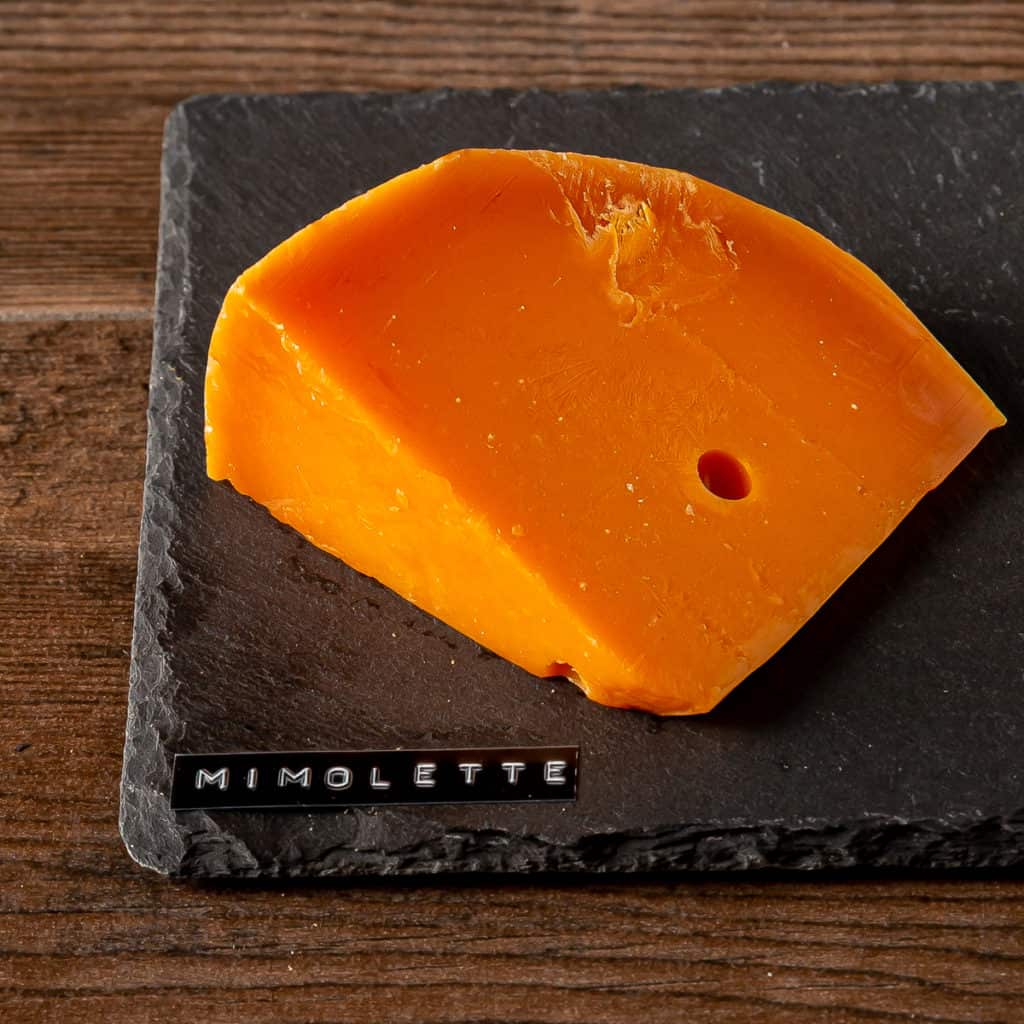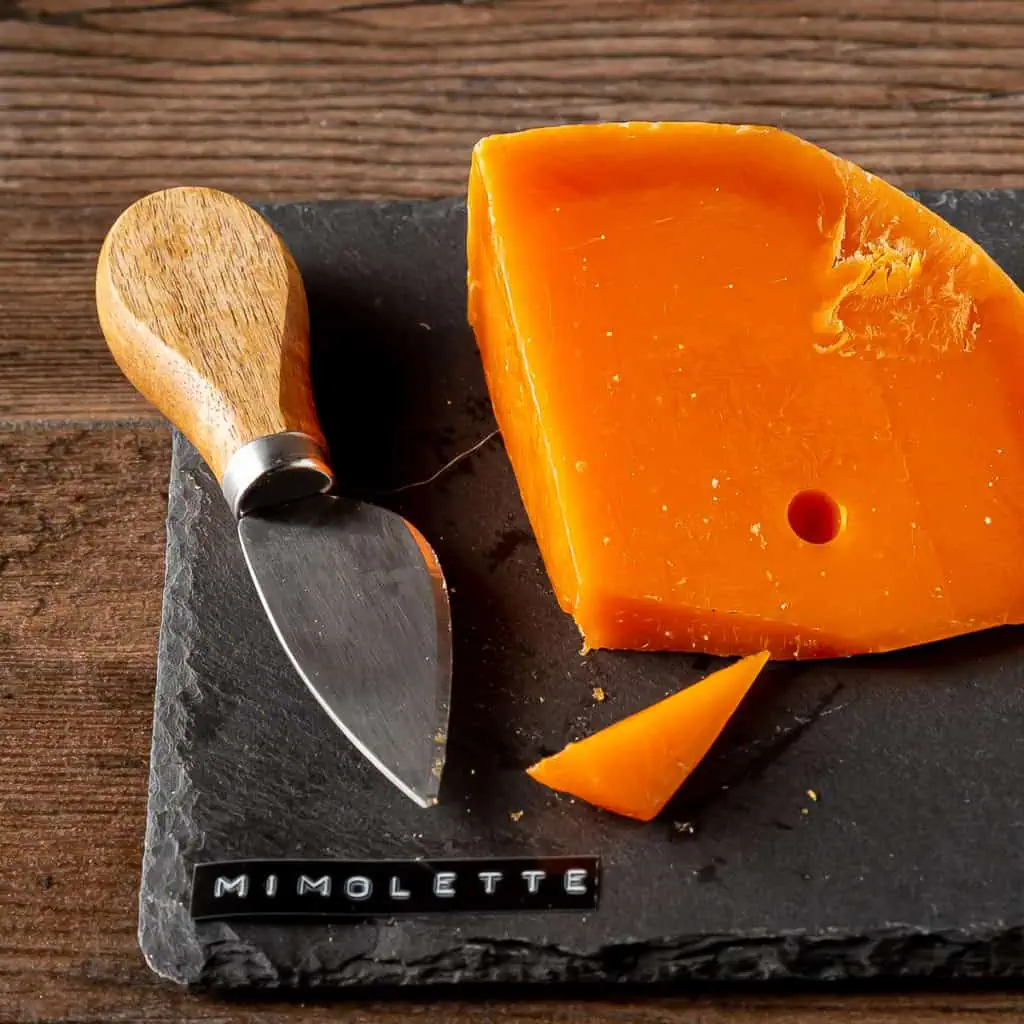This bright orange French cheese, Mimolette, has been the source of a LOT of controversy over the years, resulting in it even been banned in the US for a period of time! Keep reading to learn about the controversy, as well as tasting notes, pairings, where to find it, how to serve it, and more.
This post may contain affiliate links. I may make a small commission if you make a purchase through those links.

Quick Facts
- Milk: Cow
- Flavor: Mild, Nutty
- Aroma: mineral, fruity, cheddar-like
- Pasteurized? Yes
- Vegetarian? No
- Texture: Varies based on age - the standard 6 month aged is semi hard, while more aged (up to 18 months) varieties become hard and slightly oily.
- Rind: Natural - be sure to scroll down to read more about it and the controversy surrounding the rind
- Country of Origin: France
- Region of Origin: Normandy
- Producer: Isigny (among others)

The Controversy (Why Mimolette was banned in the USA)
Listen up, because there has been some DRAMA over this cheese.
It all starts with the way the cheese is aged. Milk, rennet (cheese-making catalyst), and annatto (color, see below) are formed together in a ball-shape, pressed, rest in a salt bath for a few days, and then placed on wooden boards to age in caves.
After the initial aging process, the balls of cheese are moved to a different cave and placed on netting, which allows a mold to form around the cheese. Cheese mites then go at the mold, creating the craters Mimolette is famous for.
Here's where it gets super fun. The FDA determined that the level of mites in the cheese was too high. Not that it couldn't have mites, but that it just couldn't have that many. So in 2013, they banned it. Thankfully, the ban was short-lived and just a short year later, the cheese was let back into the country.
Why is Mimolette orange?
The same reason many cheeses (like cheddar and others) are orange - annatto. Annatto is a natural, vegetarian ingredient derived from seeds that adds no flavor and a big punch of orange color.
How to serve Mimolette Cheese
In France, mimolette is often a "starter" cheese. Which is to say, a cheese given to children and those who aren't super familiar with cheeses. For this reason, it's a great option for a cheese plate when you are not sure of the palate of your guests, as everyone can enjoy a bite of mimolette. It's controversial history is also a wonderful conversation starter!
Other uses include grating the aged version, which is very hard, on salads and over meats. All ages of mimolette may be grated and melted, although expect the older versions to release much more oil as they melt.
If you like this cheese, you might also like:
- Comte
- Gruyere
- Aged Gouda
- Edam
Every weekend i used to visit this web page, for the reason that i want enjoyment, since this this web page conations genuinely pleasant funny information too.
I posted some of this I bought on instagram a few months ago and a friend messaged me "do you know what's IN THAT CHEESE?" I replied, don't tell me until I eat it, and messaged him back a week later. tbh, mites are one of the least gross things I could think of being on/in cheese! It's SO GOOD though!
Bahahaha I agree 100%. If people figured out what rennet was they'd probably stop eating cheese altogether. Or what makes blue cheese blue. Or really thought about what "aging" cheese means.